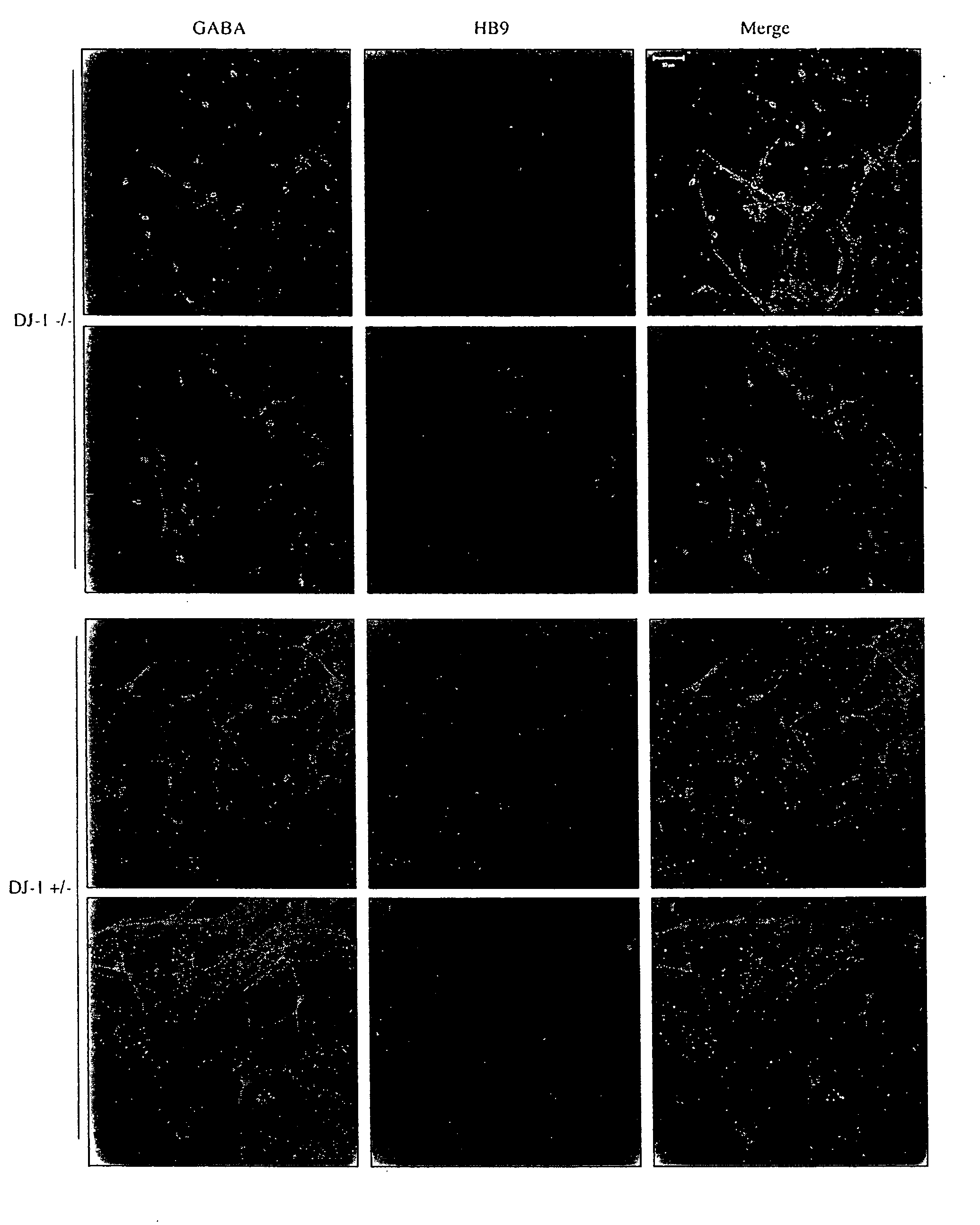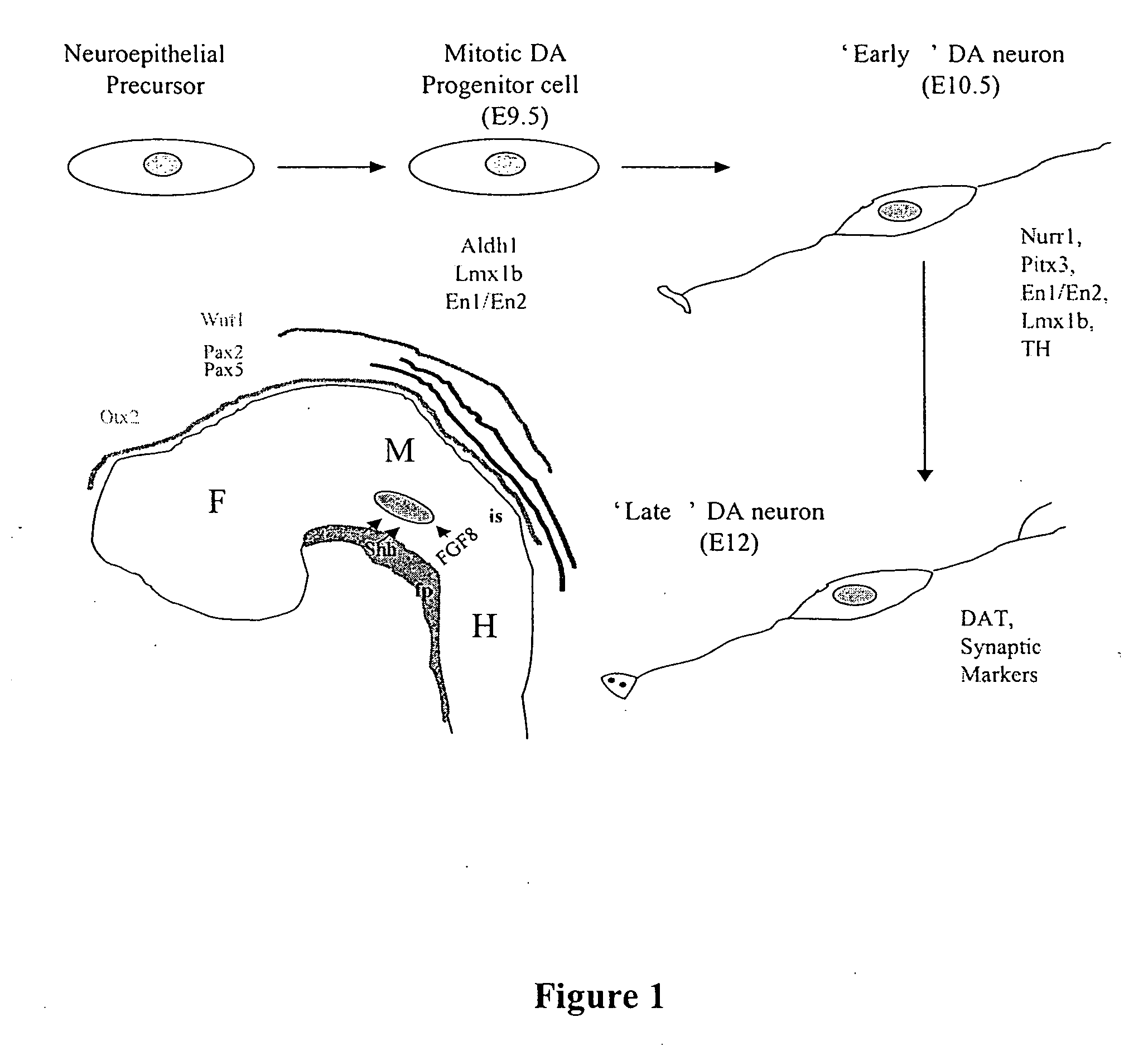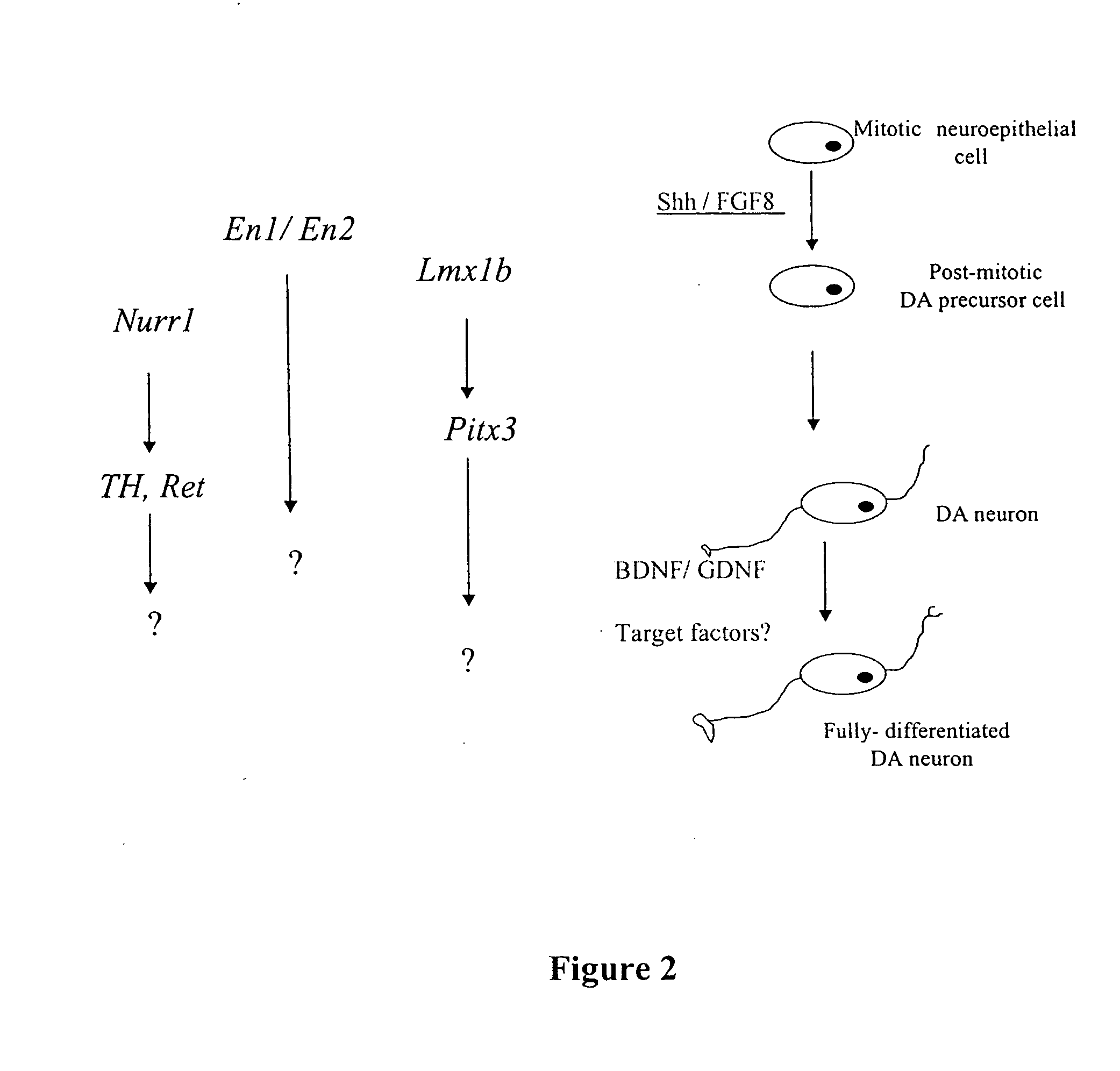Cellular models of neuron-associated disorders and uses thereof
- Summary
- Abstract
- Description
- Claims
- Application Information
AI Technical Summary
Benefits of technology
Problems solved by technology
Method used
Image
Examples
example 1
Generation of a ‘Marked’ Reporter ES Cell Line
[0079] To examine the process by which mouse ES cells acquire a dopaminergic phenotype, murine ES cell lines were produced capable of giving rise to ‘marked’ mature dopamine neurons (DNs) identifiable by the expression of enhanced yellow fluorescent protein (eYFP) or β-galactosidase (LacZ). A Cre-recombinase based 2-transgene approach was used (FIG. 3). This method has been broadly used in whole animals for cell type-specific and tissue-specific expression (Srinivas et al., 2001). Briefly, the phage-derived Cre recombinase was expressed specifically in midbrain dopamine neurons along with a second transgene that harbors a marker gene under the regulation of Cre recombinase. A strain of mice was derived in which Cre recombinase was “knocked-in” at the dopamine transporter (DAT) locus, a ‘late’ marker of dopamine neurons (Zhuang et al., 2001). This marker is more specific than other markers, such as TH, since TH is also expressed in other...
example 2
Differentiation of DY1 ES Cells into ‘Marked’ Dopamine Neurons
[0081] Two established and complementary protocols to differentiate ES cells into DNs have been described. The embryoid body (EB) method (Lee et al., 2000) involves several steps: first, spherical cell aggregates (termed embryoid bodies) are generated that contain ectodermal, mesodermal and endodermal derivatives; second, these aggregates are selected for neuronal precursors and expanded with basic-FGF (bFGF); and third, differentiation is induced by growth factor withdrawal. DN differentiation is observed in vitro in terms of TH expression, an early marker of the dopamine lineage (Chung et al., 2002; Lee et al., 2000). There is also vesicular dopamine release, although this may be at a level that is significantly reduced below that found in primary midbrain cultures (Kim et al., 2002; Kim et al., 2003) (and consistent with our unpublished data).
[0082] A second protocol, called Stromal Cell-Derived Inducing Activity (SD...
example 3
Lentiviral Vectors
[0086] We have generated lentiviral vectors that express human Nurr1 or PitX3 (TFs implicated in dopamine neuron development and selectively expressed in post-mitotic midbrain DNs during development) cDNAs and transduce nearly 100% of cells in an ES culture and allow the overexpression of genes in mitotic or postmitotic cells (Zennou et al., 2001). Expression is induced over 20-fold, as confirmed by real-time quantitative RT-PCR (FIG. 8). Additionally, we have generated vectors that harbor pairs of cDNAs, including PitX3 and Nurr1 together, or either PitX3 or Nurr1 along with a fluorescence marker such as dsRed2 (FIG. 9).
[0087] We have also generated Lentilox (Rubinson et al., 2003) RNAi-based vectors that target the expression of Nurr1 and PitX3. Lentilox vectors harbor the U6 promoter to drive the expression of stem-loop sequences that mediate RNAi-based inhibition of target gene expression in order to knock-down the expression of sequences of interest, such as...
PUM
 Login to View More
Login to View More Abstract
Description
Claims
Application Information
 Login to View More
Login to View More - R&D
- Intellectual Property
- Life Sciences
- Materials
- Tech Scout
- Unparalleled Data Quality
- Higher Quality Content
- 60% Fewer Hallucinations
Browse by: Latest US Patents, China's latest patents, Technical Efficacy Thesaurus, Application Domain, Technology Topic, Popular Technical Reports.
© 2025 PatSnap. All rights reserved.Legal|Privacy policy|Modern Slavery Act Transparency Statement|Sitemap|About US| Contact US: help@patsnap.com



